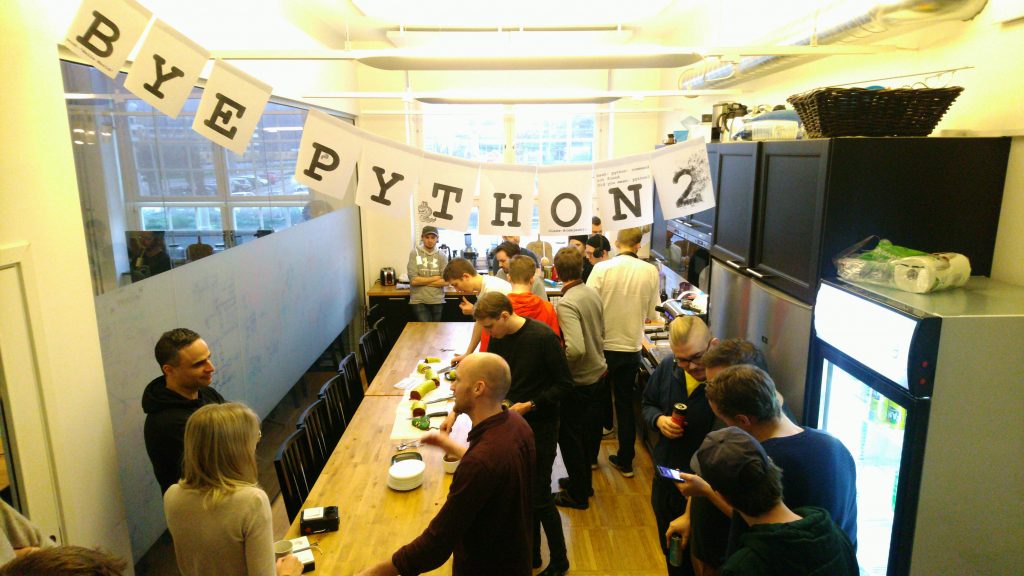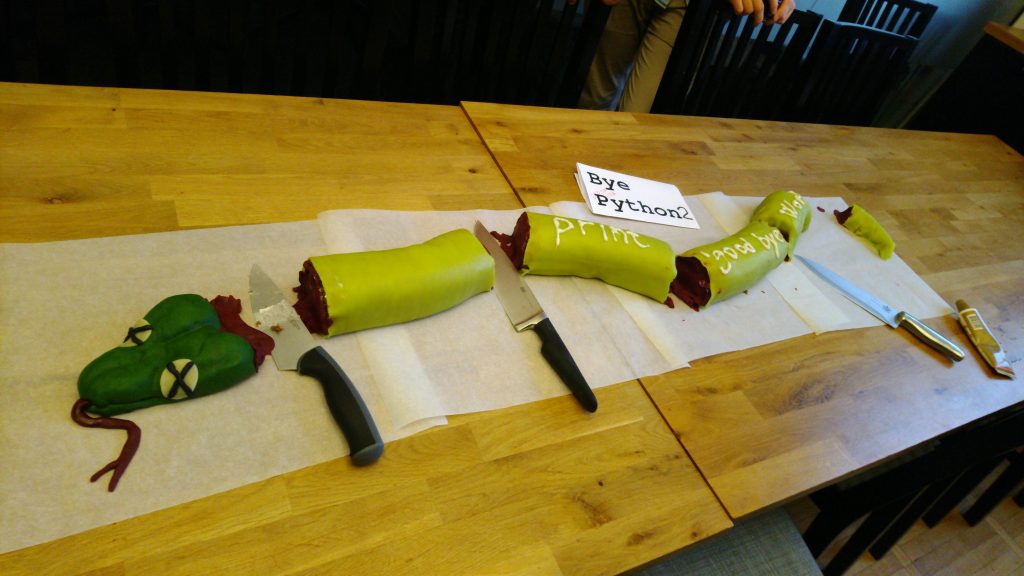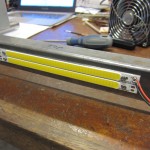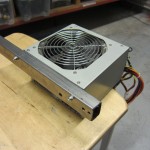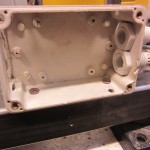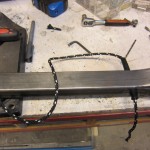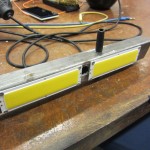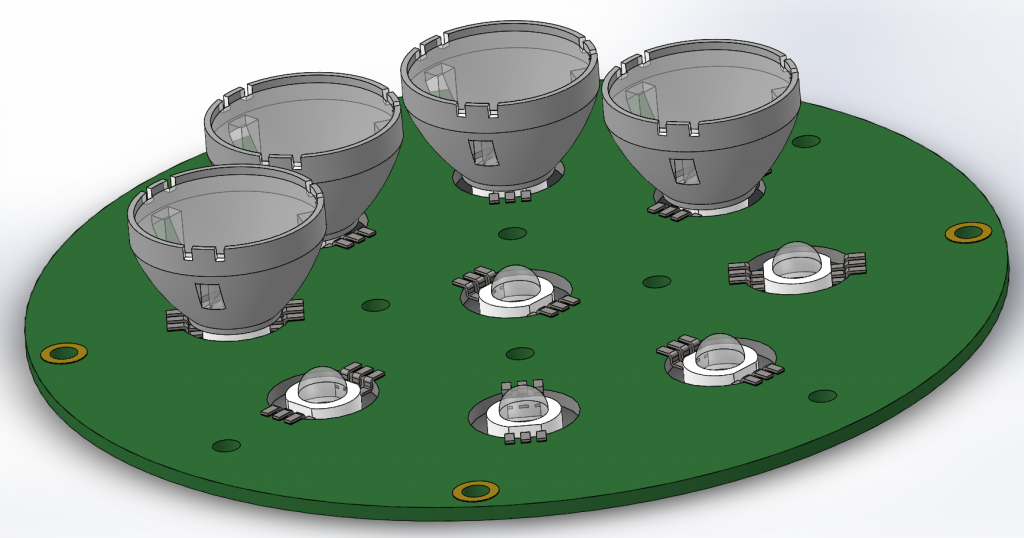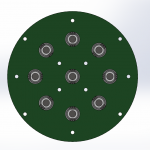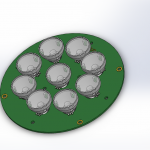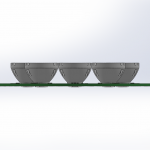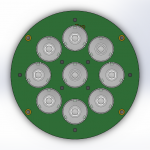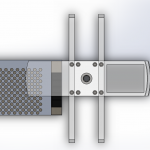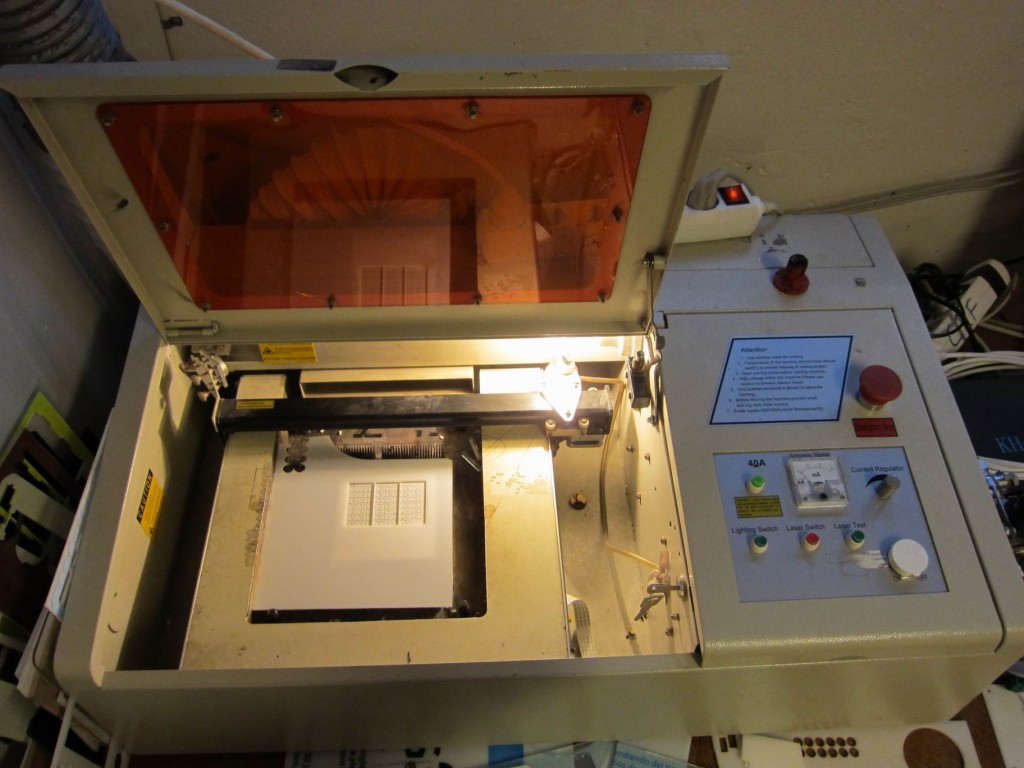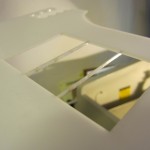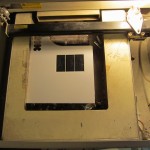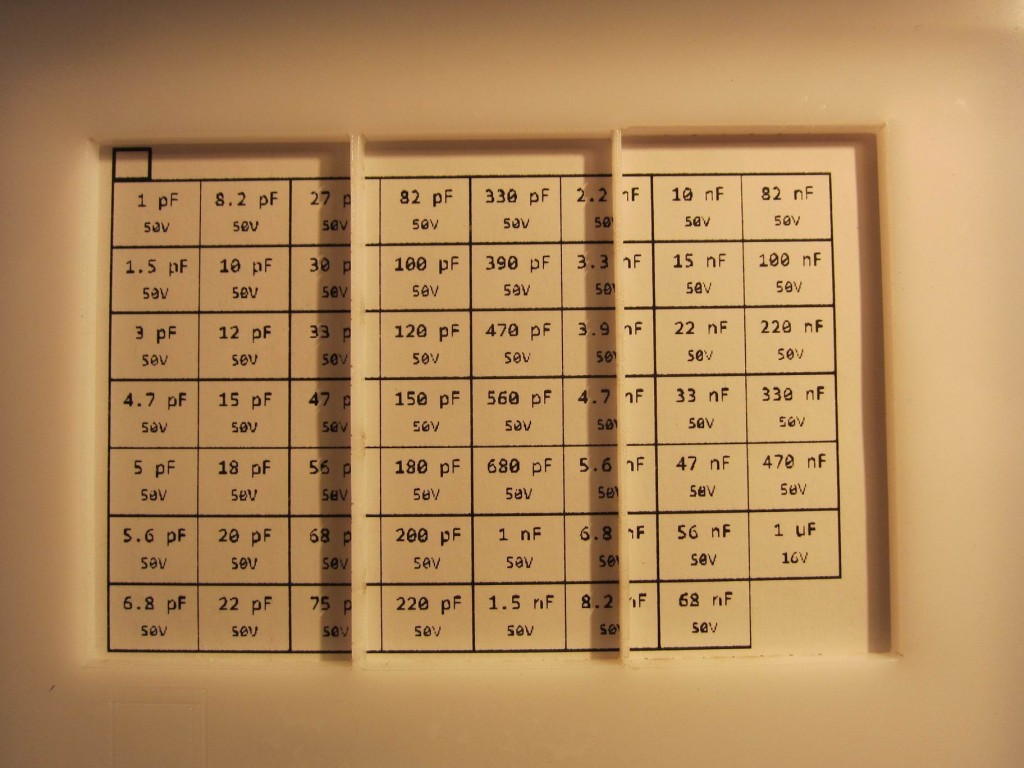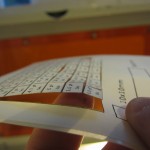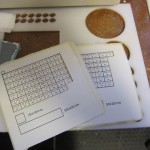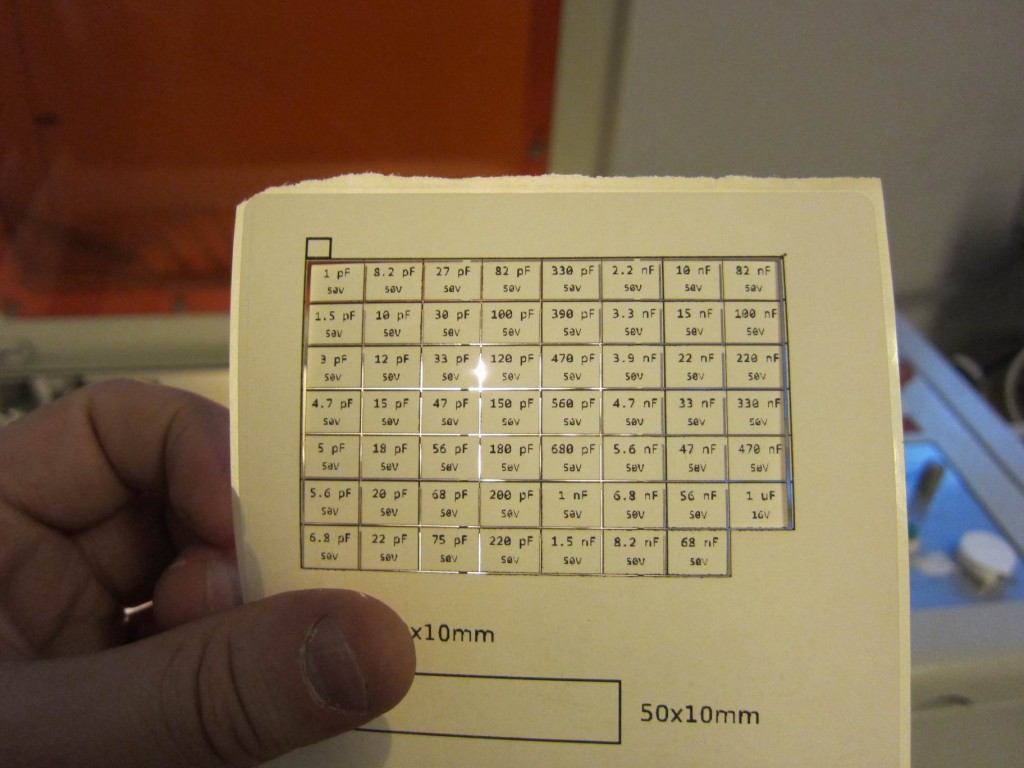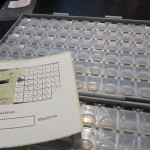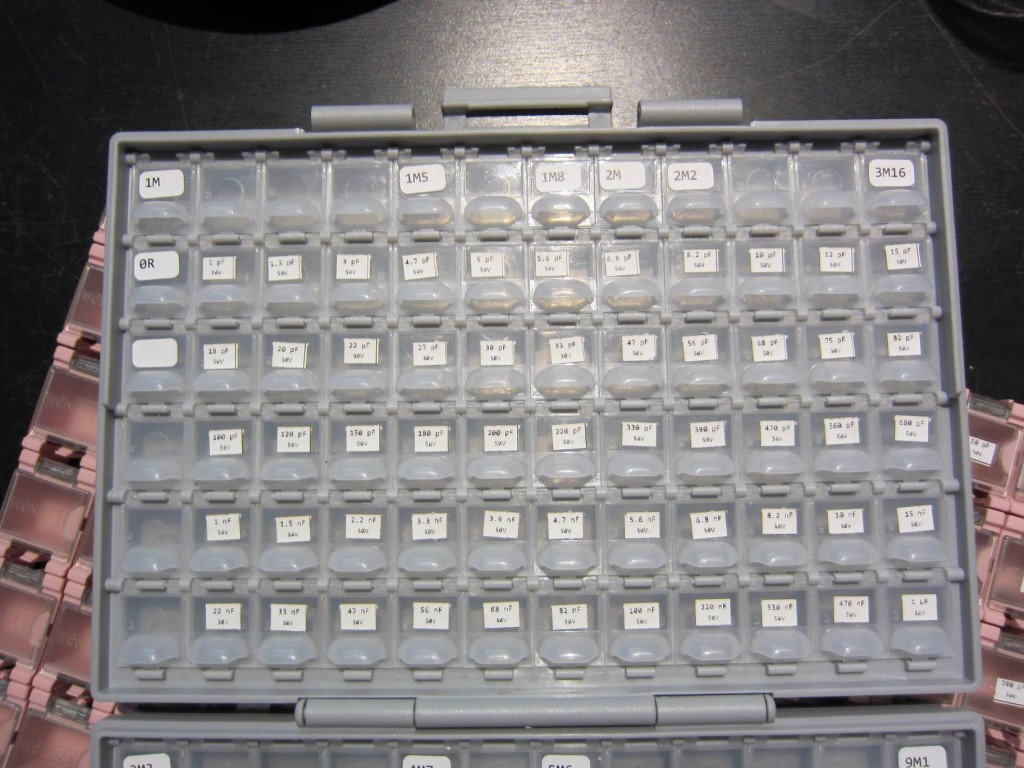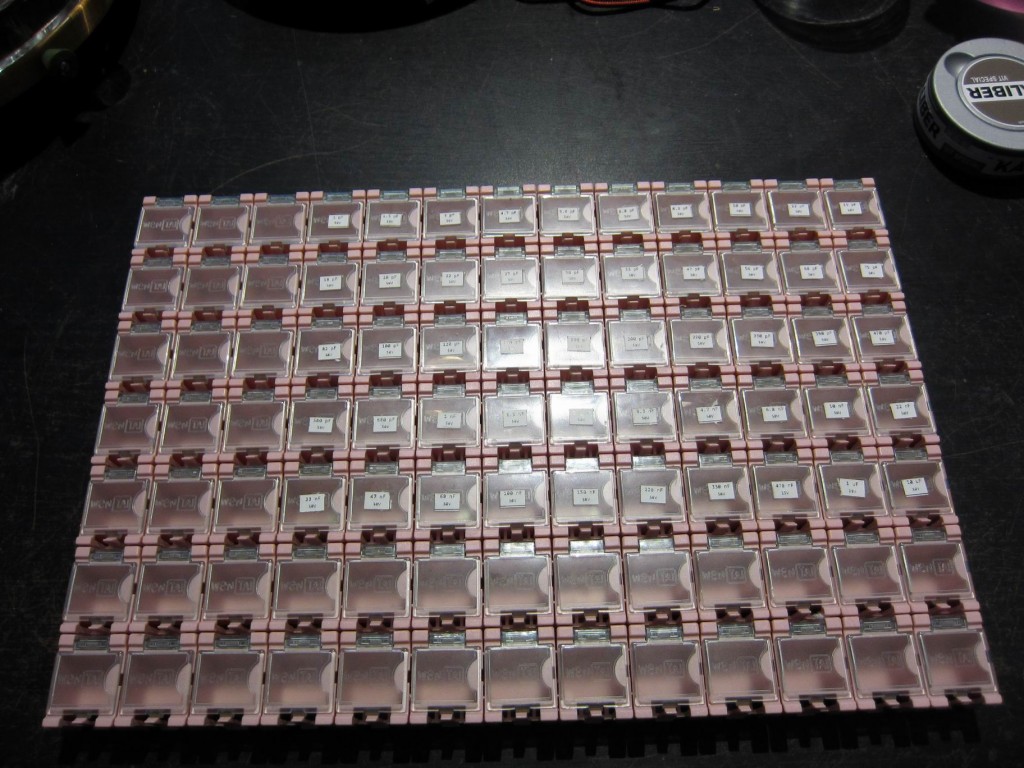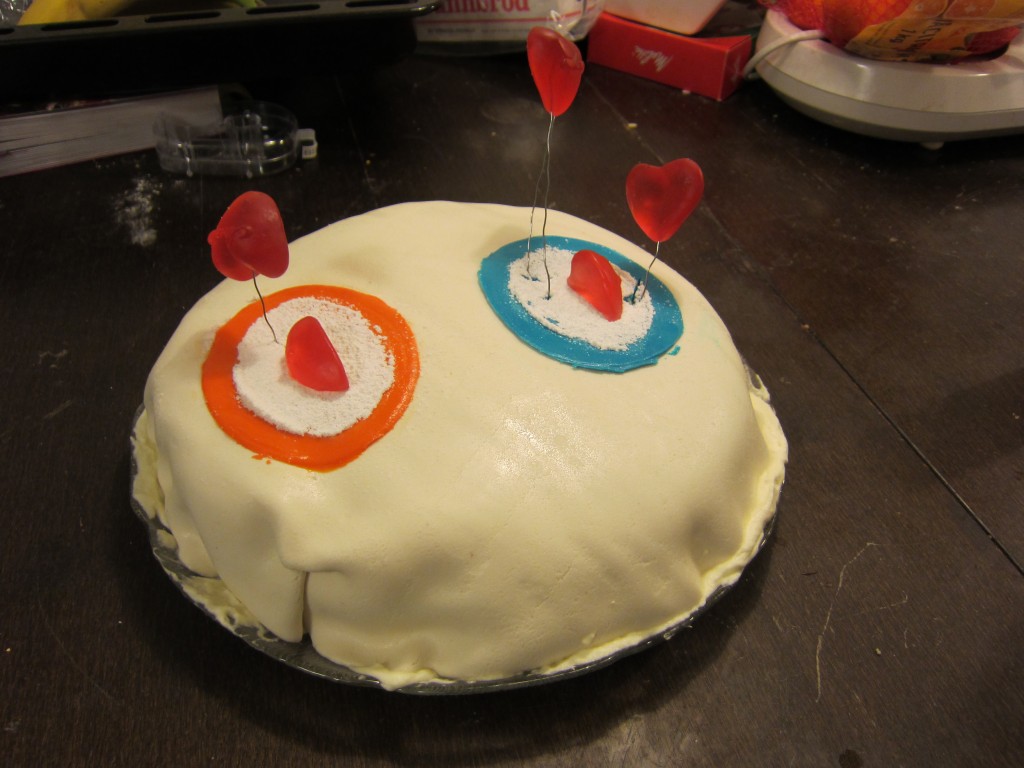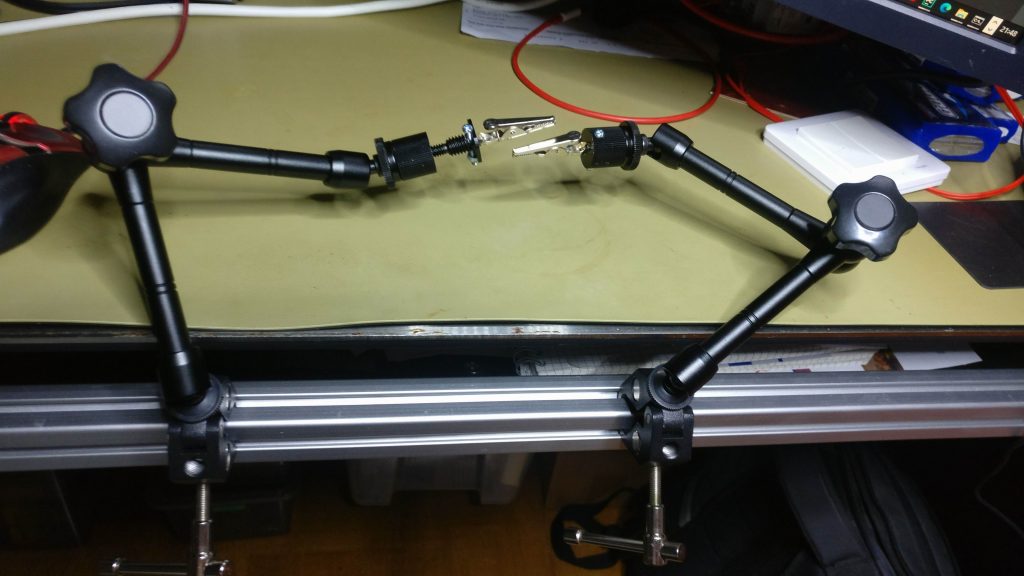
This is a pair of helping hands I made for soldering.
Ordinary clamps and holders are so flimsy. The base is a couple of articulating arms that is ordinary used for dial clock holders at CNC machines.
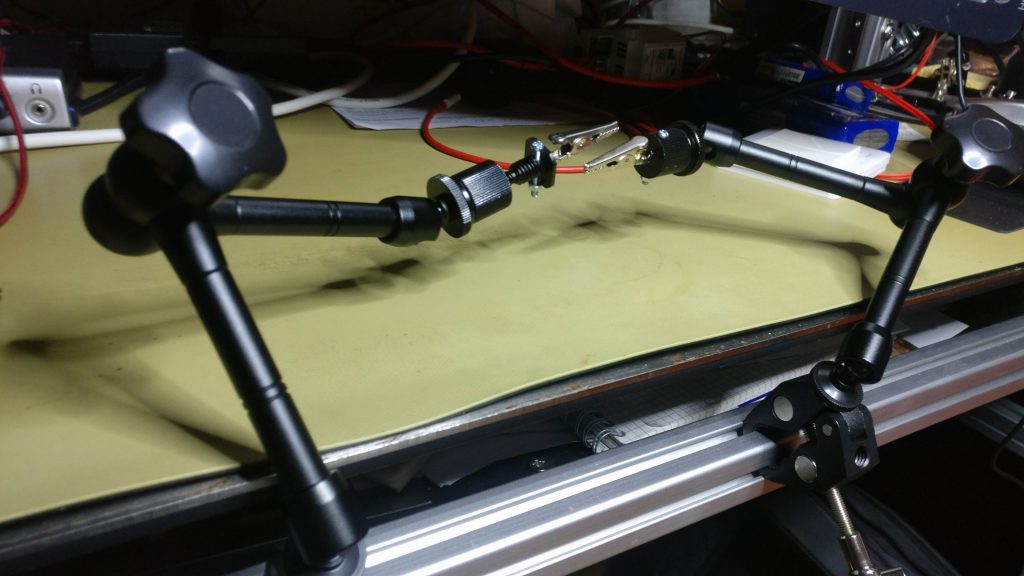
Category Archives: Uncategorized
Bye Python2
Fiery Fox – a flaming fox sculpture
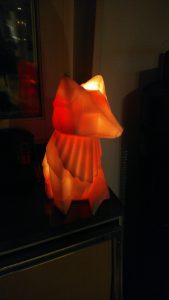

My friend find a really neat night lamp in the shape of a low poly fox. It diffuses the light super good and makes a good base for some addressable LED’s.


I wanted an easy way of attaching the WS2812 LED strip inside the hollow sculpture and decided to laser cut out a base out of transparent acrylic. SVG cutting image can be found here: InnerStandForLEDStrip.svg
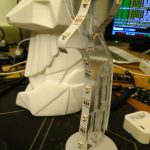
I place the LED strip on the edges of the acrylic base and soldered them in a continuous bus.
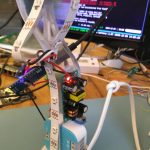
Then I soldered the bus to an Arduino Nano, and hooked up a Plejd light controller that gives out 1-10V that I read of the Arduino via resistor divider.
The program for the Arduino uses the WS2812FX library and reads the 1-10V input via an ADC: FieryFox at Github.
Flashbar for festival using sACN over WiFi with ESP8266
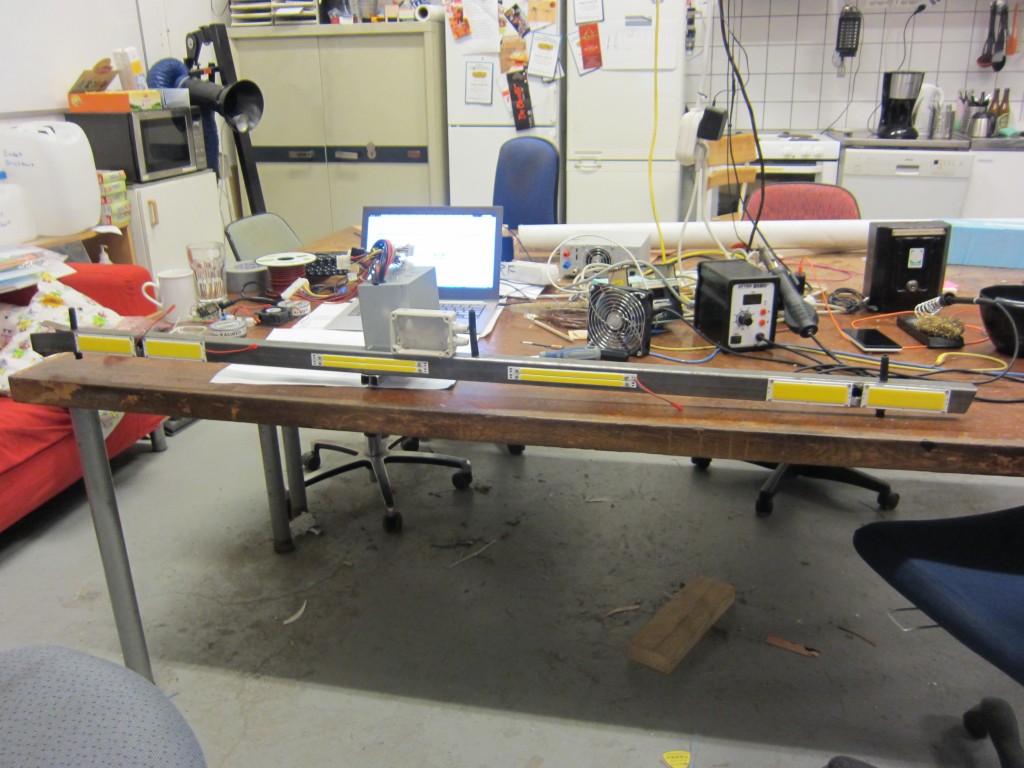
This flashbar, aka blinder, was used under a concert to give a blinding effect for the audience.

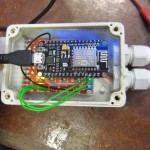
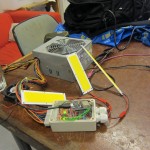
A mosfet driver is enabling the LED’s. The LED’s is 10W element, and there is 8 elements on the flashbar giving 80W of power.
It’s powered from an PC power supply.
The ESP8226 is running a small UDP server and listens for sACN packets. sACN is like DMX512, but over UDP instead of RS-485.
You can find the firmware here https://github.com/TimGremalm/FlashBar.
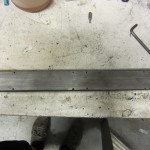
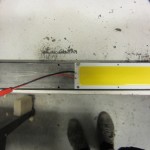
The LED’s are screwed down on top of a steel bar to transfer the heat.
Festivalljus – LED, Lens, Heatsink Assembly
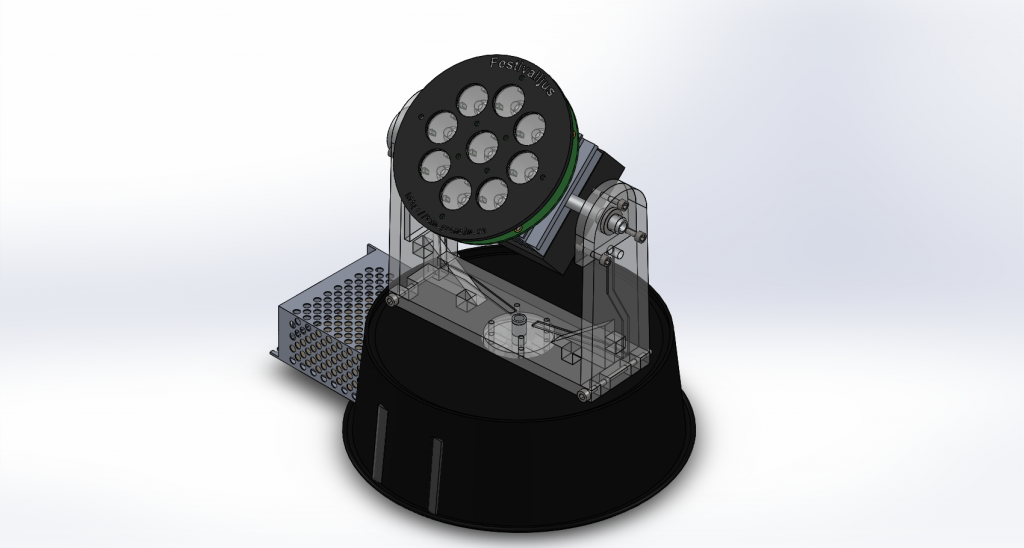
One of the hardest things with this project is to solve the problem with the heating. 9 pieces of 3W LED tends to get very hot, 27W that have to be transferred to the air.
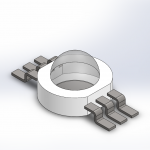
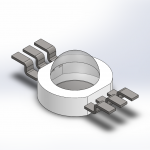
If I bend the pins on the led I can make the LED’s go through the PCB. An alternative is to use a lot of small via’s under the LED to transfer the heat to the underside. But I think a direct contact with the heatsink will be more effective.
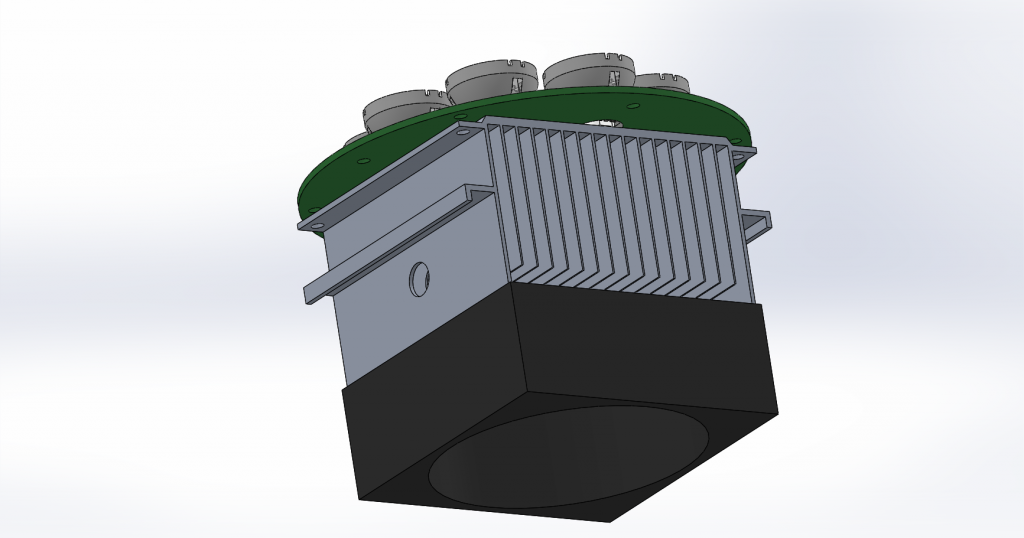
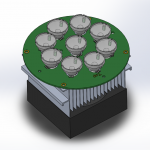
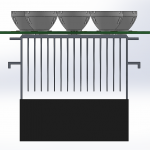
A CPU cooler should be sufficient enough to transfer the heat out to the air. I don’t know if the fan is necessary.
The whole assembly will look something like this:
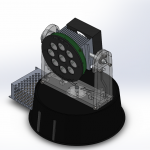
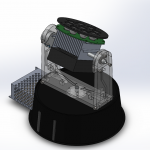
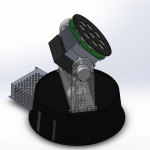
Optics Specification
- 3W RGB high power led bead http://www.ebay.com/itm/221976194559
- 15Degree 21mm Reflector Collimator LED Lens http://www.ebay.com/itm/231945164112
- Heatsink Fan For Intel P4 CPU http://www.ebay.com/itm/140592116044
Festivalljus – Powersupply
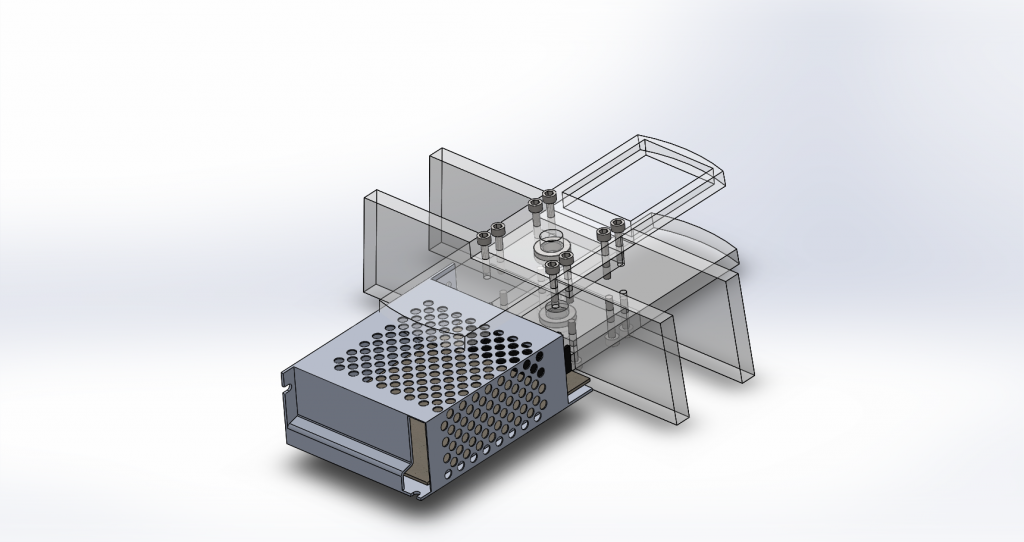
A 12V 5A (60W) switched powersupply will be used for Festivalljus. http://www.ebay.com/itm/181719390201
60W will give a lot of headroom for the 30W LED it’s designed for.
Laser cutting labels for component boxes
LED lights in Iceland
LED pixel wall at Keflavik airport
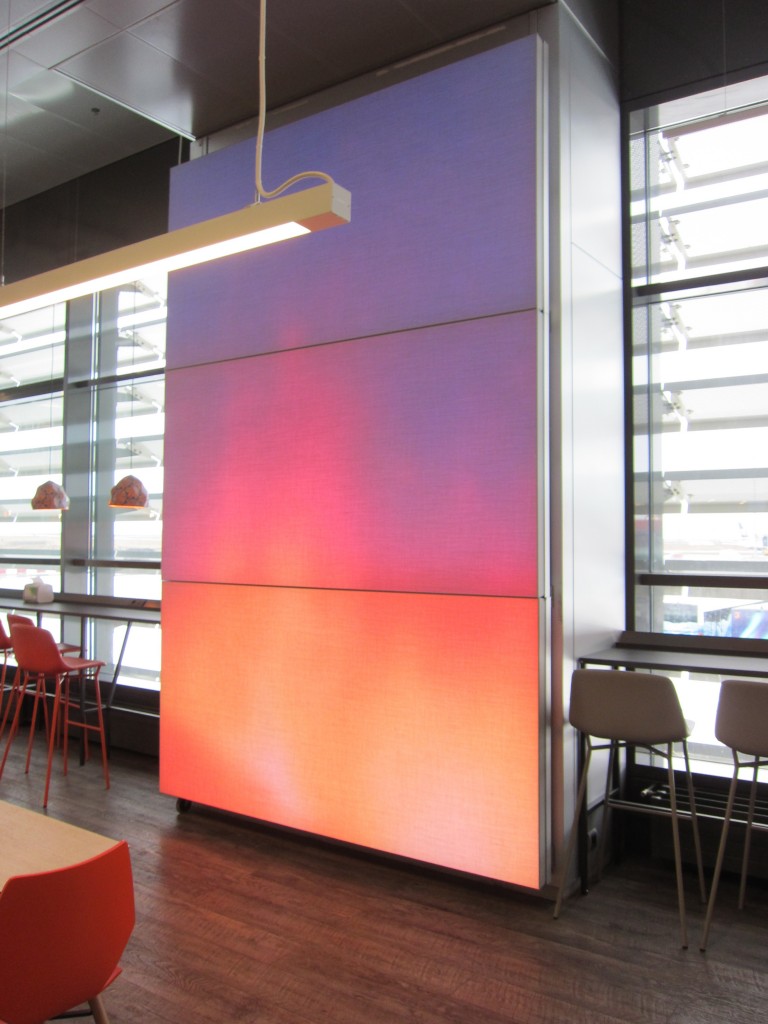
At the airport a stumbled on some cool LED fixtures, it was some kind of addressable LED with an extraordinary diffuser made out of textile.
You can see the beautiful animation of a volcanic eruption lava on the right screen, and a sweet animation of aurora on the left.
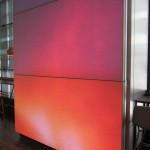
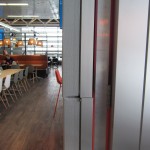
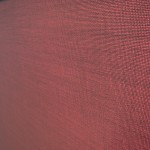
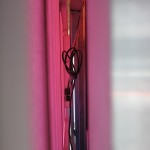
Addressable LED facade at Harpa concert hall Reykjavík
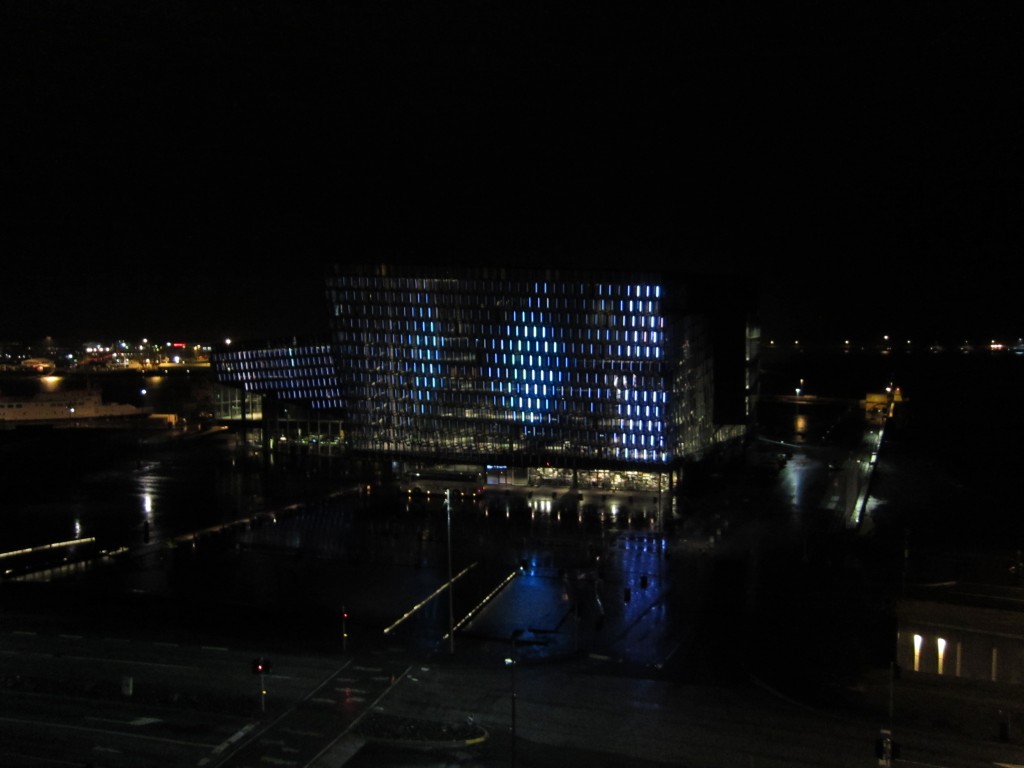
They had lit up the whole facade of Reykjavíks concert hall Harpa.
It had small narrow LED strips in each window pane that covered the building completely, it looked beautiful at night.
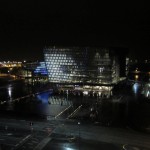
Portal cake
Chalmers Robotförening – ett hackerspace eller makerspace?
Definition
Ett hackerspace är ett ställe som drivs av medlemmar där folk med samma intresse av datorer, verkstad och teknologi kan träffas och samarbeta. [1]
Skillnaden mellan ett hackerspace och makerspace är hårfin, båda termerna står för samma sak, en plats för likasinnade att träffas och arbeta på projekt. På Wikipedia så gör man ingen skillnad på ett Hackerspace, Makerspace eller Hacklab.
Make Magazine har en artikel om just skillnaden mellan makerspace och hackerspace där dom skriver att ett hackerspace har mer fokus på programmering och elektronik, och makerspaces ett bredare fokus och är mer öppet för allmänheten. [2]
Hackerspaces.org skriver att makerspaces ofta satsar på målet av en produkt, medans hackerspaces satsar på intellektuella vägen. [3]
Chalmers Robotförenings klassificering
Chalmers Robotförening har robotik som huvudinriktning, robotik involverar programmering, elektronik och mekanik vilket stämmer bra överens med ett hackerspace.
CRF har inte alltid utgivet sig för att vara ett hackerspace, det var först på senare 2000-tal när termen “hackerspace” började bli mer känd som vi insåg att föreningen stämde in bra under klassificeringen hackerspace.
Vår verkstad är inriktad åt mekanik för robotar, men den är inte begränsad till det. Exempelvis så kan vi om vi vill såga trä i vår verkstad, men det är ingen träverkstad för det. Den kommer nog inte heller bli speciellt anpassad för träarbete då utrustning för trä inte riktigt passar vår förening och det är dyrt att investera i.
Föreningar grenar ut sig och blir bredare med tiden, det är naturligt. CRF har blivit mycket bredare under dom 11 år vi funnits, men CRF är inte tillräckligt brett för att kalla sig för ett makerspace.
Apropå ordet “hack”
Ofta finns en rädsla för ordet “hacker” eller “hack”, dess negativa klang har byggts upp av film och media som för det mesta belyser negativa händelser. När en datorattacker utförts som varit hack så har ordet hacka förknippats med datorattack. [4]
Detta är förstås felaktigt, i själva verket så är det “crack” eller “cracking” som bör användas i det sammanhanget. [5]
Att hacka innebär att man på ett kreativt sätt experimenterar och utforskar för att tänja på begränsningar i ett system. [6] Att hacka ett system kan leda till att säkerhetshål upptäcks som i sin tur kan utnyttjas av “crackers”. Att hacka något är alltså inget ont i sig.
[1] https://en.wikipedia.org/wiki/Hackerspace
[2] http://makezine.com/2013/05/22/the-difference-between-hackerspaces-makerspaces-techshops-and-fablabs/
[3] https://wiki.hackerspaces.org/Makerspace
[4] https://en.wikipedia.org/wiki/Hacker_%28computer_security%29#History
[5] http://www.catb.org/jargon/html/H/hacker.html
[6] https://en.wikipedia.org/wiki/Hacker_culture
